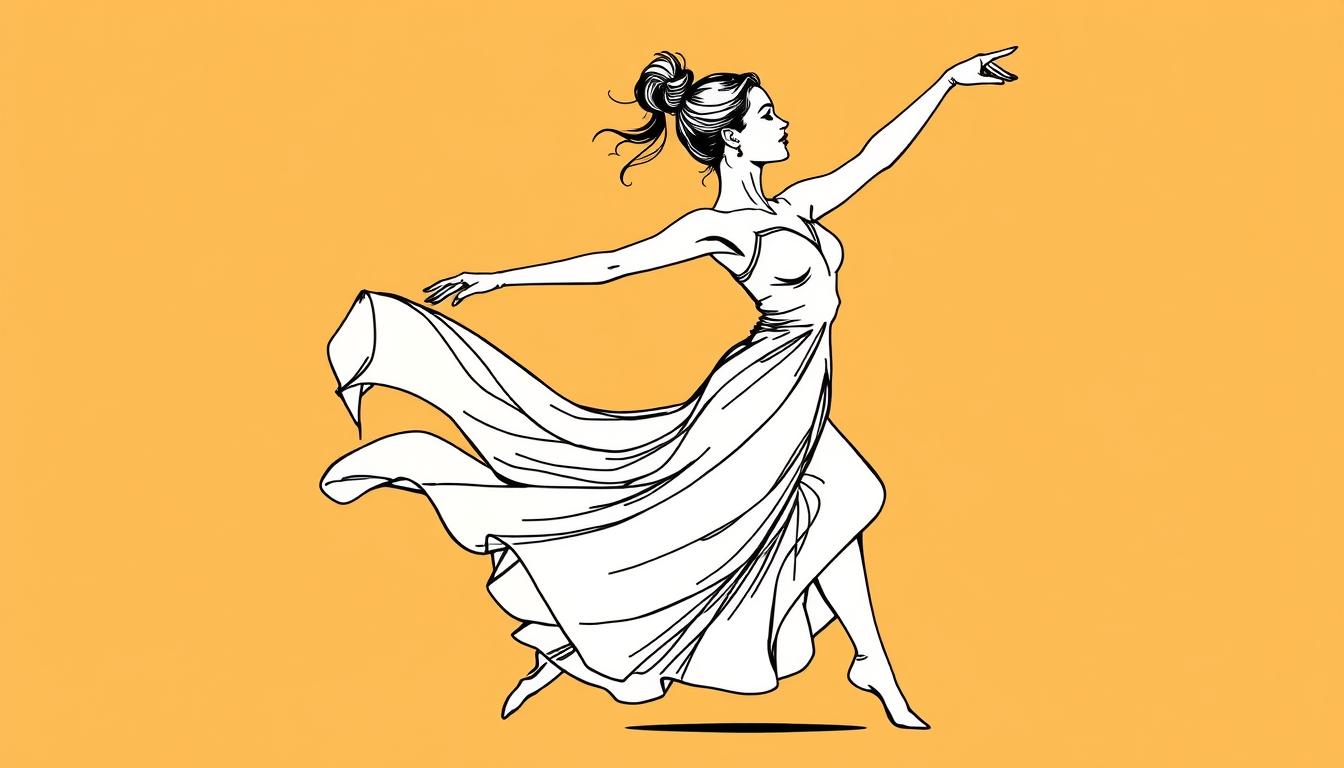A young dancer’s journey from a local studio to a world stage captures a story of discipline meeting artistry. This path often starts with a single, focused step.
In Japan, rigorous training shapes performers. They blend a traditional work ethic with contemporary creative expression. The results can be extraordinary.
At the Panda Ballet School, also known as the Takako Mori Ballet School, students absorb a unique technique. The foundation is purely classical, but the instruction encourages interpretive depth. Mentorship here is key.
Competing at the Youth America Grand Prix puts a dancer on a global map. It is the world’s largest student ballet scholarship competition. Talents from leading schools worldwide gather there.
Placing in the Junior Division Top 12 is a significant validation. It signals years of dedicated practice paying off. This achievement positioned one young artist among the most promising of her generation. Her story reflects a broader pattern of Japanese dancers moving from national training to international recognition.
The following sections trace the specific milestones that shaped the career of Sakura Nagai.
Early Life and Formative Training
In Japan, a dancer’s professional path is carved from childhood. It is shaped by a cultural reverence for precision and artistry.
This journey demands immense commitment from the entire family. Daily classes and weekend rehearsals become the norm. Such sacrifices are seen as a necessary investment in a serious training regimen.
Childhood and Japanese Cultural Roots
The Japanese ballet system is highly structured. Students progress through defined skill levels from a young age. The pedagogy emphasizes repetition, respect for lineage, and group harmony.
This cultural framework influenced how Sakura Nagai approached collaboration. It balanced the pursuit of personal excellence with a sense of collective purpose.
Initial Dance Training and Influences
At the Panda Ballet School, under Takako Mori’s direction, Nagai built a classical foundation. The instruction encouraged interpretive depth alongside technical rigor.
Her education extended beyond movement. It included music theory and performance psychology. Instructors noted her musicality and stage presence early on.
This comprehensive preparation revealed pathways to a national university and professional career. Her potential was clear from the start.
Breakthrough in Japan’s Dance Scene
Competing against students from state-funded national university programs and elite private academies, one young artist from Japan secured a place among the finalists. Her Top 12 finish in the Junior Division at the Youth America Grand Prix was the pivotal moment. It validated years of preparation on an international scale.
Milestones and Performance Highlights
The YAGP stage gathered exceptional talent. Dancers from institutions like the Korea National Institute for Gifted in Arts and various academies showcased their skills.
Her performance stood out for its control and maturity. She executed classical variations with precision and clear interpretive depth. These are the exact qualities the judges seek.
This achievement opened immediate doors. It led to scholarship offers and invitations to prestigious workshops. Scouts from the international ballet community took note.
Support from National Institutions and Educators
Back home, the success resonated deeply. Japanese educators saw it as a positive reflection of their training methods. It proved high-quality instruction existed outside major cities.
Support from her mentor, Takako Mori, was essential. The Panda Ballet School provided more than technical coaching. It offered crucial logistical and psychological preparation for the high-pressure event.
This placement positioned the dancer within a strong cohort. Other Japanese finalists like Natsuki Sugimoto also excelled. Together, they demonstrated the growing strength of Japan’s ballet ecosystem on the world stage.
International Exposure and Prestigious Training Opportunities
Scholarship opportunities through YAGP introduced the dancer to educational systems in New Zealand and Hong Kong. These pathways offered advanced training outside Japan’s established institutions.
Global Dance Competitions and Exchanges
YAGP participation extended beyond the competition stage. Master classes with international professionals provided direct access to diverse teaching methods.
Workshop sessions created lasting artistic networks. Dancers trained alongside competitors from different countries, fostering exchanges that transcended national boundaries.
The competition format emphasized cultural learning. Participants absorbed approaches from schools across the Asia-Pacific region.
Training Experiences in New Zealand and Hong Kong
New Zealand’s dance education emphasized versatility. Dancers from institutions like Medhi Ballet Coaching demonstrated contemporary-classical fusion.
This approach contrasted with traditional Japanese methods. It highlighted alternative philosophies for career preparation.
Hong Kong’s dance scene integrated Western technique with regional sensibilities. Schools like Venus Villa Dance Academy showed how cosmopolitan Asian cities interpret classical ballet.
These international experiences expanded Nagai’s artistic repertoire. They introduced new choreographic styles and performance traditions.
Sakura Nagai in the Competitive Dance Arena
International ballet competitions demand more than technical perfection—they test artistic maturity under pressure. The Youth America Grand Prix creates this environment on a global scale.
Participation in Elite Ballet and Dance Contests
Nagai’s journey through YAGP involved multiple elimination rounds. Each stage increased performance pressure as the field narrowed. The competition’s standardized criteria evaluated technical execution, artistic interpretation, and musicality.
Judges assessed classical variations requiring precise turns, jumps, and extensions. Dancers also needed to communicate character and emotion. This comprehensive evaluation separated exceptional talent from technically proficient dancers.
The Junior Division featured diverse training backgrounds. Competitors came from institutions like the Korea National Institute for Gifted in Arts. This state-funded national university integrates comprehensive arts education with academic studies.
| Training Institution Type | Example Schools at YAGP | Training Approach | Competitive Strengths |
|---|---|---|---|
| State-Funded National University | Korea National Institute for Gifted in Arts | Integrated arts-academic curriculum | Comprehensive foundation |
| Private International Academy | Bayer Ballet Academy, Dmitri Kulev Classical Ballet Academy | Specialized technical training | Technical precision |
| Regional Dance Schools | Flora Ballet, TLEUBAEV Ballet School | Local methodology with global outlook | Artistic individuality |
| International Coaching Centers | Medhi Ballet Coaching (New Zealand) | Contemporary-classical fusion | Versatility and adaptation |
Competing against national university programs provided realistic ability assessment. The experience informed Nagai’s future training decisions. YAGP’s professional stages replicated company performance conditions.
Her Top 12 placement demonstrated consistent quality across evaluation criteria. While not a podium finish, it positioned her favorably for scholarship consideration. The competition’s $5 million annual scholarship pool created tangible opportunities.
Influence on Contemporary Dance and Educational Legacy
The ripple effects of a dancer’s international success extend far beyond individual achievement. They reshape educational approaches and artistic possibilities across an entire dance community.
Innovations in Artistic Expression
YAGP alumni bring diverse influences to contemporary dance. Over 500 graduates now perform with 100 leading companies worldwide.
This global exposure creates artistic versatility. Dancers blend classical foundations with modern interpretations. The result is a richer, more dynamic dance landscape.
Asian artists gain increased representation in major companies. Their success demonstrates new pathways for international recognition.
Contributions to Dance Education and Community Engagement
Competitive achievements influence how schools structure training programs. Institutions now emphasize both technical mastery and performance readiness.
Private academies benefit from connections to national university programs. Success stories create valuable feeder systems for higher education.
Mentorship opportunities emerge through workshops and master classes. Experienced dancers guide younger artists through competitive journeys.
| Institution Type | Impact of YAGP Success | Educational Evolution | Community Benefits |
|---|---|---|---|
| Private Academies | Increased visibility and student recruitment | Enhanced competition preparation curriculum | Local dance community inspiration |
| National University Programs | Access to pre-vetted talented students | Integration of contemporary repertoire | Stronger arts education pipelines |
| Regional Dance Schools | Proof of international pathway viability | Balanced classical and modern training | Mentorship networks expansion |
| International Training Centers | Cross-cultural exchange opportunities | Versatility-focused methodology | Global artistic community building |
The educational legacy transforms how young dancers approach their careers. They see viable routes from local studios to international stages.
This shift benefits the entire dance ecosystem. It creates sustainable pathways for artistic growth and professional development.
Reflecting on a Timeless Dance Journey
Beyond the competition scores and scholarship offers lies the true essence of a dancer’s path. Sakura Nagai’s trajectory illustrates the daily dedication ballet demands.
Her YAGP Top 12 placement was a milestone, not an endpoint. It opened doors to further training and professional opportunities.
The discipline from Japanese methods combined with international exposure creates resilient artists. This foundation prepares dancers for career realities.
Nagai’s story balances individual achievement with essential support systems. Teachers, family, and institutions all contribute to success.
Looking forward, her choices will influence both personal growth and the next generation. The timeless elements—passion, commitment, resilience—connect dancers across cultures.
What remains is the fundamental relationship between artist and art. The ongoing conversation between body and music defines this beautiful, difficult path.




